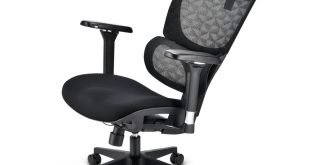The MSI AG2712A ships in a large box with MSI branding clearly visible. Inside, the AG2712A is well protected by styrofoam corners.

Inside we find two boxes containing the accessories. Included in the box is a large power brick rated to deliver up to 180W, a simple keyboard and mouse combination, a remote control with batteries, an antenna for the TV Tuner card, a set-up disc and a manual.
The MSI AG2712A follows the design of MSI's gaming oriented products with a black and red colour scheme.
Along the very bottom is a thick plastic stand with two rubber feet to support the weight of the system. Directly above that we find a black grill behind which the two 5W speakers are hidden. In the centre is an MSI Gaming Series Badge.
The bottom right corner holds three badges, whilst the top left corner is covered with a sticker listing some of the AG2712A's key features. Along the top we can also see the 2MP integrated webcam.
We deliberately aimed our flash directly at the screen to test its anti-glare capabilities and are happy to report it works very well.
A closer look at the top left corner shows MSI has chosen to incorporate their distinct Gaming Series logo in the sticker.
Moving back to the bottom we can see the badges in the bottom right corner reflect the use of Intel and AMD hardware in an MSI system.
The MSI Gaming Series badge sits in the centre of the grill, directly below the MSI brand name.
Turning the system around shows the plastic stand used to hold the system upright. This stand is very thick and, although made from plastic, feels like it can withstand a fair amount of abuse.
The stand is held in place with two screws and can be removed easily to allow for a wall mount.
Although not very easy to see, the back of the system also features a glossy imprint of the Gaming Series logo.
On the right side we can see the input and output ports as they are usually found on a TV. Directly above these ports we find more vents.
The right-hand side, when facing the AG2712A, houses the optical drive.
The right-hand side presents us with three LEDs. The top LED lights up when the system is turned on and blinks when the system is in Sleep Mode. The second LED serves to indicate whether the monitor is turned on and the third LED indicates HDD activity.
Directly below the LEDs are five buttons: On/Off, Mode/Input, Menu, Volume Up and Volume Down.
Moving down further we can see two USB 3.0 ports, the built-in card reader and Power connector. It is worth noting that the right-hand USB 3.0 port serves as a Super Charging port, allowing users to charge mobile devices faster.
Our final look at the outside of the AG2712A brings us to the input and output ports. From left to right we can see the TV Tuner's gold plated connection, the HDMI IN and OUT ports, a VGA port, an ethernet port, two more USB 3.0 ports, two USB 2.0 ports and the microphone and headphone jacks.
The AG2712A comes with a sticker warning users that removing the outer shell voids your warranty.
Strong clips hold the outer shell in place and it takes a decent amount of force to completely remove it.
With the shell removed we can see the two 5W speakers along the top of the photo. We can also see the three casings protecting the internals.
We removed the bottom casing to show one of the Plextor drives mounted under the optical drive. The top right casing houses the other Plextor Drive and has enough space to fit a 3.5″ drive on top of that.
Finally, we can see the motherboard. Although it cannot be seen when using the system, MSI has chosen to stick with their color scheme.
In the bottom left we can see the four 4GB Hynix memory modules.
Moving to the right we can see one copper heatpipe taking care of the CPU and another three flattened copper heat pipes handling the Radeon HD 8970M. These heat pipes run to a heatsink with a blower fan design. This lay-out allows the cooler to expel hot air directly out the top of the system.
 KitGuru KitGuru.net – Tech News | Hardware News | Hardware Reviews | IOS | Mobile | Gaming | Graphics Cards
KitGuru KitGuru.net – Tech News | Hardware News | Hardware Reviews | IOS | Mobile | Gaming | Graphics Cards
















Exccellent – I like it – especially the RAID performance!
Really good performance results. I dont think 80c is too high. 85c is cutting it close though. Interesting to see dual SSDs being used a lot more now, which is wise as it is critical to an overall system performance result.